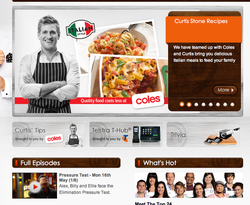Product Placement
Product Placement has been around in the media landscape for years in both scripted and non-scripted arenas. You only need to look at James Bond or Wayne's World to find blatant uses and parodies of product placement (See the 'Try to Unsee it' tab for examples). Product placement gave rise to an alternate avenue for product exposure. Particularly used earlier on in film where advertisement breaks did not exist, but a need to recoup production costs did, companies began recognising product placement as a legitimate way to increase Brand Identity and Recognition. Audiences responded to the incorporation of brands in media consumption with relative indifference. A study of Product placement suggests that "This high level of acceptance can be explained through the fact that although 51% of respondent agree they are exposed to enough brands that they would rather not see them in the films they watch, however they also admit that as brands are part of our everyday life it only make sense to see them in films too"[30] This quote makes sense specifically in relation to the simple aesthetic and subject matter of reality television. Reality being about 'real situations and subjects', should incorporate 'real' products if they are consequentially part of the everyday life of the subject matter. Fictional drama on the other hand may be able to inconspicuously incorporate a car into their narrative with relative ease, however as seen by Fig 1, product placement can become strained and cringeworthy in its worst moments. This is not to say that Reality Television is always flawless when it comes to integrating products within its structure. Fig 2 shows some of the more awkward moments of product placement in recent Reality Television Productions of Top Model and Project Runway both local and international.
The convenience of Reality Formats such as Top Model or Project Runway lies in the fact that these shows can be (re)generated in any part of the world time and time again with fresh faces using the same formats. The last Clip in Fig 2 with the host telling the contestants to take their models to the L'Oreal make-up tent and the Tresemme hair salon (AND! not forgetting about the MYER accessory wall) is a direct copy of the American parent show whereby it is Garnier Hair Salon and the Macy's Accessory wall. Thus product placement needn't be region specific, and not something that only American shows can pull off, in fact if it works in one area of the world you can pretty much guarantee audiences will respond in the same way to local product placement in the reproduced local version of that particular reality format. This idea of the reality format is an interesting concept. In some cases audiences have been reported to respond positively to product placement as it adds (as strange as this sounds) 'reality' to the aesthetic of the show when done correctly, it is only when product placement becomes 'superfluous'[31] that audiences start to backlash against the alternate form of advertising; the point where the audience starts to feel underestimated in intelligence is the time that they switch off.
The convenience of Reality Formats such as Top Model or Project Runway lies in the fact that these shows can be (re)generated in any part of the world time and time again with fresh faces using the same formats. The last Clip in Fig 2 with the host telling the contestants to take their models to the L'Oreal make-up tent and the Tresemme hair salon (AND! not forgetting about the MYER accessory wall) is a direct copy of the American parent show whereby it is Garnier Hair Salon and the Macy's Accessory wall. Thus product placement needn't be region specific, and not something that only American shows can pull off, in fact if it works in one area of the world you can pretty much guarantee audiences will respond in the same way to local product placement in the reproduced local version of that particular reality format. This idea of the reality format is an interesting concept. In some cases audiences have been reported to respond positively to product placement as it adds (as strange as this sounds) 'reality' to the aesthetic of the show when done correctly, it is only when product placement becomes 'superfluous'[31] that audiences start to backlash against the alternate form of advertising; the point where the audience starts to feel underestimated in intelligence is the time that they switch off.
Fig 1. A History in Product Placement Fig 3. Product Placement in Some Reality Shows
This is all well and good, but the outstanding question surrounding the production of reality programs is largely - why have productions resorted to product placement as a means for funding and recouping cost of production? As discussed in the Changing Consumer Habits section the landscape is responding to the way that consumers are consuming television content. The advent of the internet and DVR technology has revolutionized the way that typical audiences will consume media - that is the change from an autocratic model where networks dictated what could be watched when to audiences taking media consumption into their own hands, whereby because of the internet and DVR they can watch their shows when they want and without the 30 second ad break. This has spurned different reactions from the advertising world such as new innovations in online advertising but there is no denying that the peak value of the 30 second ad has been left behind since file-sharing and internet streaming become more and more prominent "marketers are looking to a new generation of television advertising formats to reach those consumers.”[33] Product placement as discussed above provides a unique avenue that allows products to still be advertised to audiences in a subtler, often more engaging way that fills the void that the slow death of the 30 second ad has left in the media landscape. Mark Burnett, producer of Survivor produced another Reality Program called 'The Restaurant' that was entirely funded by product placement from three major sponsors. Burnett is obviously in favour of product placement and said "It's a great opportunity for sponsors to have more control and networks to have less risk. It's a very good business move for [advertisers] to have integration into the show that can't be TiVo'd out."[34]
Reality Television as a genre is extremely broad and large. Despite this, it is a perfect content shell for an advertiser-driven production that has very specific and narrow focus as far as advertising campaigns that can be integrated into the show go. The reason for this is because while reality programs may be broad in their possible content Reality shows are rarely about more than one specific tangent or attainable goal. Wife Swap is all about swapping wives, Survivor about being on an Island, Project Runway about design and Top Model about modeling. As such the 'reality program' as a standalone entity has a visceral capability to alienate and isolate target audiences to best appeal to certain demographics. Audience alienation however, is not what savvy content producers are particularly looking to do. They aim for the largest audience possible in order to be able to tap into the highest ratings possible. However this audience specification is important because it drives the potential for the advertiser-driven model to come to fruition. Simply put, audience specification allows suitable advertisers to be targeted to be involved with offline and in-show promotional opportunities. While top rating shows will always attract top paying advertisers (Seinfeld attracted $1 million advertisers fees for 1 minute slots[32]) it is easy for Reality shows to find brands that are aligned with the culture and identity of the show.

With new advertising models and new technology it is only expected that Product Placement can and would evolve from simple onscreen presence during an episode to something more like a ongoing sponsor(partner)ship between show and company. This is explore indepth in our MasterChef Case study, however what is clear in most sponsorship dealings today is both an onscreen and offline affiliation between show and product. Harking back to the simpler times of infomercials, offline affiliation is similar to the 'As Seen on TV' sticker that assumes such an association would back up consumer confidence in a certain product. Today companies may borrow the trademarks of the programs that they sponsor in order to customize their marketing strategy to benefit from the popularity and increased product awareness that the sponsored show is providing them with. An example would be the KFC Twister wrappers which every year would change seasonally to have a Big Brother eye emblazoned on them during the course of the Big Brother Series. This was then expanded on in another year whereby the Twister Wrapper had a special code that was able to be SMS'd in by the cross-section of the consumers of Big Brother and consumers of Twisters for a competition, the result of which you found out during the popular Sunday night Eviction shows.
Advertisers are jumping at the chance to integrate their brands with popular reality shows because it is becoming a more viable way to market their products. Product Exposure and Recognition through product placement provides companies with a new means of engaging with media consumers.
FOOT NOTES
[30]http://www.mecglobal.com/assets/Uploads/Reports/Resources/Sensor-China-report-product-placement.pdf
[31]http://people.ischool.berkeley.edu/~hal/Courses/StratTech09/Tech/Preso/D-placement.ppt
[32]http://www.businessweek.com/1997/22/b35291.htm
[33] Andruss, Paula (1 June 2005). “Romote Possibilities; iTV advertising faces hurdles, but early adopters benefit”. marketingpower.com, Retrieved 15 April 2011. (http://www.marketingpower.com/ResourceLibrary/Publications/MarketingNews/2005/39/10/MN060105SpecialReportRemote.pdf)
[34]http://www.realitytvworld.com/index/articles/story.php?s=1429
FOOT NOTES
[30]http://www.mecglobal.com/assets/Uploads/Reports/Resources/Sensor-China-report-product-placement.pdf
[31]http://people.ischool.berkeley.edu/~hal/Courses/StratTech09/Tech/Preso/D-placement.ppt
[32]http://www.businessweek.com/1997/22/b35291.htm
[33] Andruss, Paula (1 June 2005). “Romote Possibilities; iTV advertising faces hurdles, but early adopters benefit”. marketingpower.com, Retrieved 15 April 2011. (http://www.marketingpower.com/ResourceLibrary/Publications/MarketingNews/2005/39/10/MN060105SpecialReportRemote.pdf)
[34]http://www.realitytvworld.com/index/articles/story.php?s=1429


